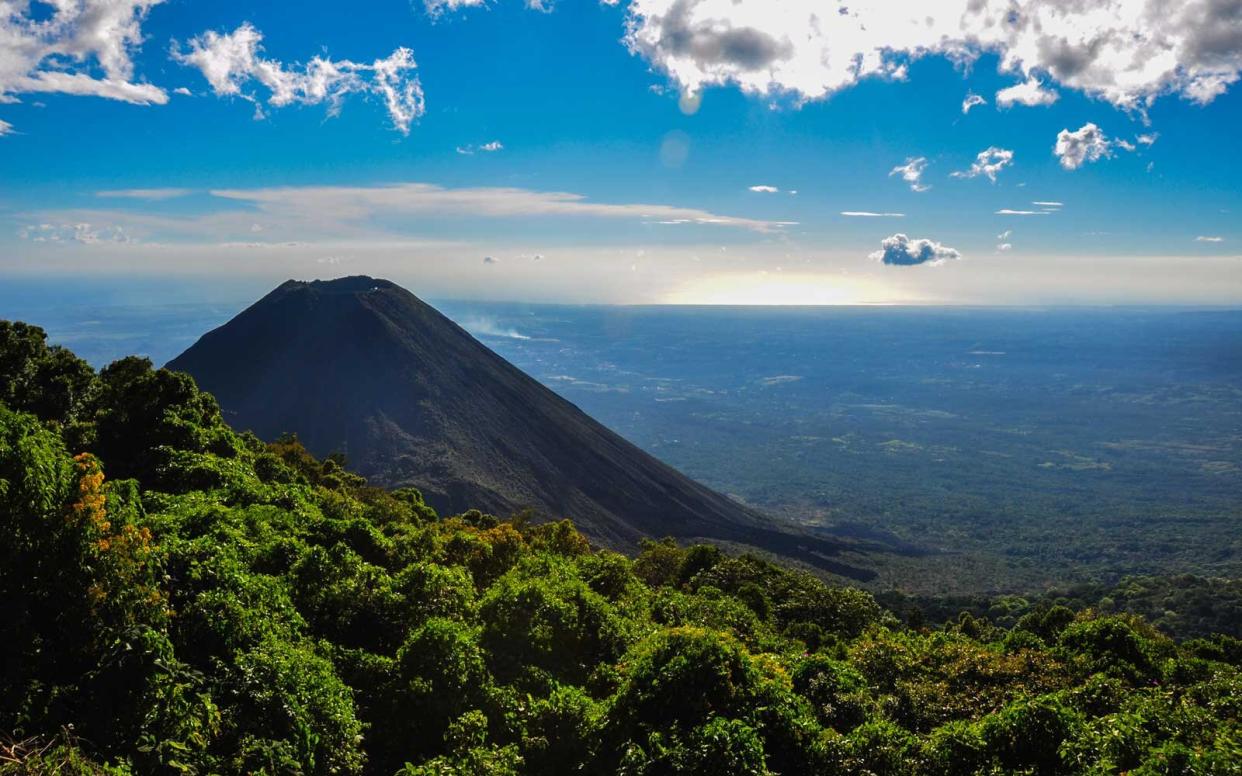Everything You Need to Know About How Volcanoes Are Formed

Getty Images/iStockphoto
If you were to draw a map of all the volcanoes on earth, you’d end up with a vague ring shape, with borders that touch America’s West Coast and reach all the way down to Indonesia. That’s because most of the world’s volcanoes are concentrated around the Pacific Basin, where multiple tectonic plates rub together, crash into each other, and create friction. It’s how we ended up with the Galapagos Islands, which straddle a series of plates along South America’s coast.
In other regions, tectonic plates smash into each other without creating any volcanic activity at all—they simply form massive mountains. The Himalayas are a direct result of this remarkable "plate smashing," and it’s the reason we’re able to see such dramatic peaks and dips along the earth’s surface.
But there’s another way for volcanoes to form that doesn’t require a location on the edge of a tectonic plate. These are known as hotspots. A hotspot is a fixed point, where magma from deep in the earth rises to the surface. And they can occur right in the middle of a tectonic plate.
“There are about a hundred hotspots in the world,” explained Rob Pacheco, founder of Hawaii Forest & Trail, which leads zipline tours and volcano hikes through the world’s most famous hotspot volcanic chain: Hawaii. “But there are only a half dozen that come from the same great depths as our Hawaiian magma source.”
A hotspot, Pacheco continued, remains stationary. It's like punching a hole in the tectonic plate as it moves (the Pacific Plate travels at a rate of 7 centimeters per year, roughly equal to the speed at which a thumbnail grows) across the Earth. This is how Hawaii was formed. As magma rose to the surface, it created the series of volcanoes that we observe today. It’s worth noting that the islands of Hawaii form a diagonal line to the northwest, in the same direction the Pacific Plate moves.
But if you’re assuming volcanoes can only form underwater, you are mistaken. “Of course volcanoes can form on land,” said Pacheco. "That’s how we got the whole Cascade Range in Oregon and Washington. Mount Rainier, Mount Hood, Mount St. Helens, Mount Shasta—those are all volcanoes that formed on land.”
Geologists tend to look for three specific signs when tracking volcanic activity, starting with seismicity (the occurrence of earthquakes in a given region). “As magma moves up a mountain, it’s shaking things up, and as it gets closer and closer, you get more and more earthquakes.”
The second is deformation, which pertains to the budding volcano transforming the surrounding landscape "like a balloon expanding,” noted Pacheco.
And finally, scientists look for evidence of the gases—specifically sulfur dioxide, hydrogen sulfide, and carbon dioxide—that are released in great quantities as a volcano forms.
As the magma rises closer to the surface, those gases begin to separate and expand, eventually gaining enough force to trigger an explosion. Case in point: November 14, 1959, when Kilauea Iki (located inside Volcanoes National Park) dumbfounded park rangers with its 1,900-foot-tall lava fountain. It's one of the highest ever recorded in history.
“It’s like champagne,” Pacheco said. “When you look into the bottle, you can’t see gas, but then you pop the cork, it releases the gas, and that’s what sends the champagne shooting into the air.”

